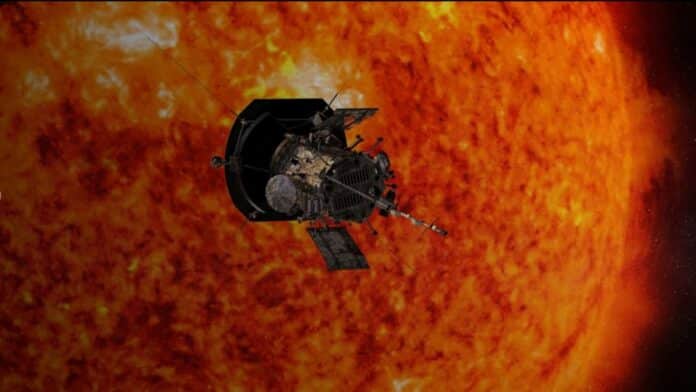
By Pranjal Malewar 27 Dec, 2024
Collected at: https://www.techexplorist.com/record-breaking-parker-solar-probe-history-closest-approach-sun/95105/
After its closest-ever approach to the Sun, NASA’s Parker Solar Probe sent a signal back to Earth, saying it was healthy and working well. The Johns Hopkins Applied Physics Laboratory team received the signal on the night of December 26.
The probe was out of contact during its closest approach on December 24, when it came within 3.8 million miles of the Sun, traveling at 430,000 miles per hour. Detailed data about its status will arrive on January 1.
NASA’s Parker Solar Probe‘s close-up study of the Sun helps scientists understand how material in this region gets heated to millions of degrees, trace the source of the solar wind (a continuous flow of material from the Sun), and learn how energetic particles are accelerated to near light speed.
“Flying this close to the Sun is a historic moment in humanity’s first mission to a star,” said Nicky Fox, who leads the Science Mission Directorate at NASA Headquarters in Washington. “By studying the Sun up close, we can better understand its impacts throughout our solar system, including on the technology we use daily on Earth and in space, as well as learn about the workings of stars across the universe to aid in our search for habitable worlds beyond our home planet.”
Previous close passes have also helped scientists identify the origins of structures in the solar wind and map the outer boundary of the Sun’s atmosphere.
Nick Pinkine, Parker Solar Probe mission operations manager at APL, said, “No human-made object has ever passed this close to a star, so Parker will truly be returning data from uncharted territory.”
The spacecraft near the Sun is protected by a carbon foam shield designed to withstand extreme heat from the Sun’s corona, which can exceed 1 million degrees Fahrenheit. The shield can endure temperatures up to 2,600°F, keeping the spacecraft’s instruments at a safe, room-temperature level. In the low-density corona, the shield is expected to heat up to 1,800°F.
On December 24, the team reported that the probe was on course to fly just 3.8 million miles (around 6.1 million kilometers) from the surface of the Sun.

Leave a Reply